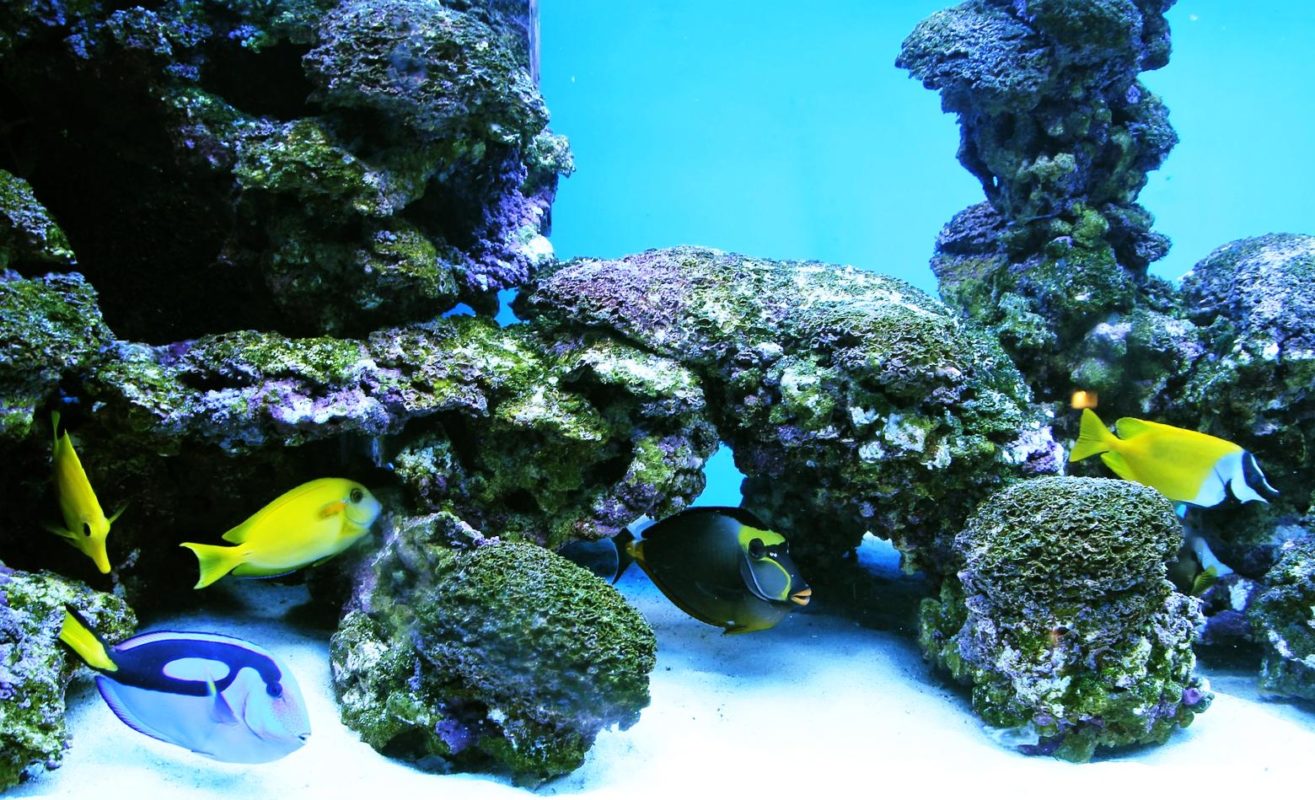Guide
Nitrogen cycle in the aquarium explained simply
The nitrogen cycle in the aquarium is also known by various names such as biological cycle, nitrification process or start cycle. Regardless of the name, however, it is always the same important process. The nitrogen cycle plays a crucial role in the well-being of fish and other aquatic life. It is important to understand how this cycle works and how it can be maintained to ensure a healthy and stable aquatic ecosystem. In this blog post I will explain the nitrogen cycle in the aquarium and what role ammonia, nitrite and nitrate play in it.

What is the nitrogen cycle?
The nitrogen cycle begins with the excretions of the fish and other creatures in the aquarium. These excretions contain ammonia, a toxic substance for triops and fish. If the ammonia remains in the water, it can cause damage to the gills of the fish and even lead to death. Fortunately, there are beneficial bacteria in the aquarium known as nitrifying bacteria. These bacteria colonise the filter material, the bottom and other surfaces in the aquarium. The nitrifying bacteria convert the toxic ammonia into less harmful substances through a process called nitrification.
The first step of nitrification is the conversion of ammonia to nitrite (NO2) by bacteria such as Nitrosomonas. Nitrite is still toxic to fish, but less harmful than ammonia. In the next step, nitrite is converted into nitrate (NO3) by other nitrifying bacteria such as Nitrobacter. Nitrate is much less toxic than ammonia or nitrite and can be taken up by most aquatic plants. The plants use the nitrate as a source of nutrients for their growth. If the aquarium contains plants, they can help to reduce nitrate levels and purify the water. This is one of the reasons why plants are so important in a well-stocked aquarium.
However, it is important to note that nitrate can accumulate in the aquarium over time. High nitrate levels can in turn cause problems and lead to algae growth. To control nitrate levels, it is necessary to perform regular water changes and consider using an additional nitrate removal medium if necessary. The nitrogen cycle in the aquarium is a delicate balance that must be maintained to ensure the health of the Triops, fish and other creatures. By limiting the number of fish in relation to the size of the aquarium, performing regular water changes, populating the aquarium with nitrifying bacteria and adding plants, you can help ensure that the nitrogen cycle functions efficiently.
Overall, the nitrogen cycle in the aquarium is a fascinating process that illustrates the vital role of bacteria and plants in maintaining a healthy aquatic ecosystem. By understanding this cycle, aquarium enthusiasts can better understand the needs of their fish and take the right measures to ensure optimal conditions.
How does the nitrogen cycle work in the aquarium?
The nitrogen cycle in the aquarium is a biological process that ensures that toxic nitrogen compounds are converted into less harmful forms. The cycle consists of several steps and involves different types of bacteria.
- Ammonia production: The nitrogen cycle begins with the excretions of the fish, snails and other creatures in the aquarium. These excretions mainly contain ammonia (NH3) and ammonium (NH4), which are toxic to the fish.
- Nitrification – conversion of ammonia to nitrate: Nitrifying bacteria, such as Nitrosomonas, first convert the toxic ammonia into nitrite (NO2). This process is called ammonia oxidation.
- Further nitrification – conversion of nitrite to nitrate: Subsequently, other nitrifying bacteria, such as Nitrobacter, continue the process and convert the nitrite into nitrate (NO3). Nitrate is less toxic than ammonia and nitrite, but can cause problems in high concentrations.
- Uptake of nitrate by plants: Aquatic plants absorb the nitrate as a source of nutrients and use it for their growth. This removes the nitrate from the water and improves the ecological balance in the aquarium.
- Reduction of nitrate: In addition to uptake by plants, certain filter media, such as special nitrate removal media, can be used to further reduce nitrate levels.
It is important to note that the nitrogen cycle in the aquarium needs time to establish itself. During this run-in period, regular water parameter checks should be carried out to ensure that the nitrifying bacteria colonies are sufficiently developed to effectively break down the toxic nitrogen compounds.